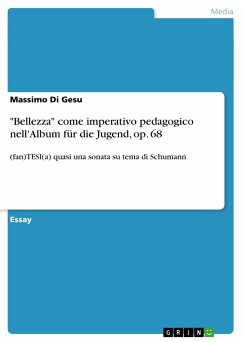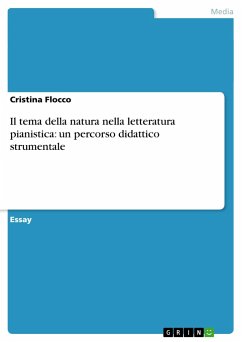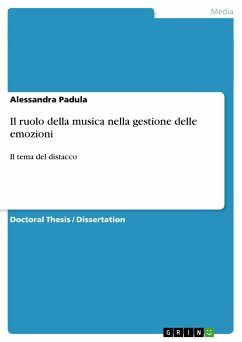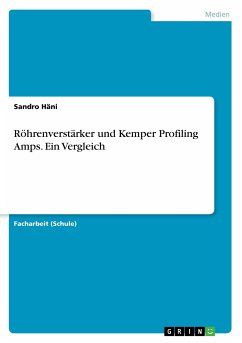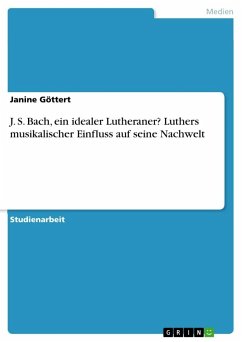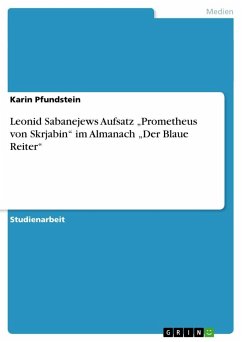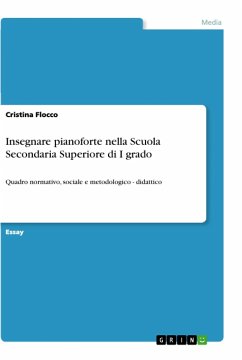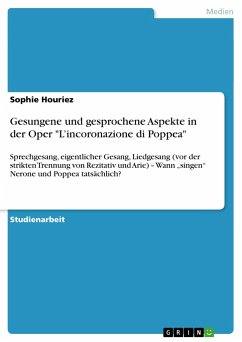
"Il bianco e nero iridescente" - Bach, Chopin, Skrjabin, Fauré: quattro accezioni del cromatismo nella letteratura pianistica

PAYBACK Punkte
0 °P sammeln!
Essay from the year 2009 in the subject Musicology - Miscellaneous, grade: 94/100, , course: Prassi esecutiva e repertori, language: Italian, abstract: Bach, Chopin, Skrjabin, Fauré: quattro accezioni del cromatismo nella letteratura pianistica ___ Bach - Ricercare a 3 BWV 1079 - 1 ___ Chopin: Ballata in sol min. N° 1 op.23 ___ Fauré: Notturno in si min. N° 13 op. 119 ___ Skrjabin: Sonata in Fa# Magg. N° 4 op. 30 ___ estratti Capitolo 1: [...] In questo senso l'idea di 'variazione' diviene in Bach dinamizzazione sonora dell'idea di mutamento, trasformazione, divenire, sostanziando in prat...
Essay from the year 2009 in the subject Musicology - Miscellaneous, grade: 94/100, , course: Prassi esecutiva e repertori, language: Italian, abstract: Bach, Chopin, Skrjabin, Fauré: quattro accezioni del cromatismo nella letteratura pianistica ___ Bach - Ricercare a 3 BWV 1079 - 1 ___ Chopin: Ballata in sol min. N° 1 op.23 ___ Fauré: Notturno in si min. N° 13 op. 119 ___ Skrjabin: Sonata in Fa# Magg. N° 4 op. 30 ___ estratti Capitolo 1: [...] In questo senso l'idea di 'variazione' diviene in Bach dinamizzazione sonora dell'idea di mutamento, trasformazione, divenire, sostanziando in pratica la transeunte qualità del tempo; la 'fuga' è metafora di un atto conoscitivo ove il soggetto si rispecchia nella risposta; la 'fantasia' è libero gioco del gesto strumentale la cui sensualità si metamorfosa in senso (fine/scopo) nella -apparentemente- spontanea germinazione di strutture narrative. Tutti questi tre elementi, peraltro intrinseci anche allo specifico del ricercare imitativo come archetipo formale, si riuniscono in aureo connubio nel Ricercare a 3 dell'Offerta Musicale, antologico monumento del magistero contrappuntistico bachiano composto nel 1747 in seguito ad un invito a Potsdam presso l'imperatore Federico il Grande che, autore del tema su cui l'intera ghirlanda di pezzi è basata, vide Bach far nascere sotto i suoi occhi proprio questo Ricercare (primo della raccolta ad essere composto), in quanto, in occasione di tale incontro, fu dal Kantor improvvisato al suo cospetto e a quello di un aristocratico uditorio in visibilio.




